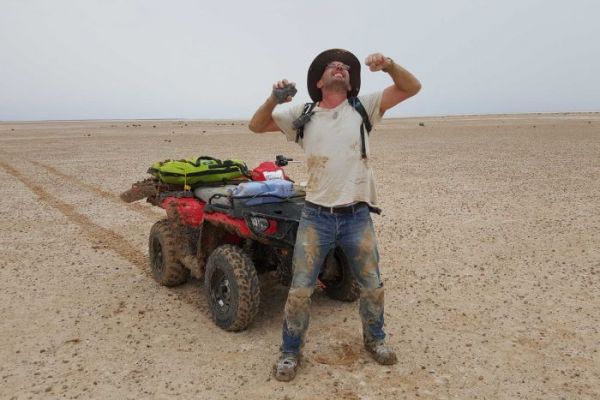Bland and his colleagues were racing to find the meteorite. It had been spotted in a remote dry lake bed in southern Australia. That lake bed was about to fill with rainwater. So the research team was using every means at its disposal to track down the rumored meteorite. They found the 1.7-kilogram rock just hours before the rain arrived. ABC News reports:
Curtin University team leader Phil Bland hand-dug the meteorite from a 42-centimetre-deep hole in a remote section of the lake bed just hours before the arrival of heavy rains would have washed away any remaining clues.
"It was an amazing team effort, we got there by the skin of our teeth," Professor Bland said.
"It is older than the Earth itself. It's the oldest rock you'll ever hold in your hand.
"It came to us from beyond the orbit of Mars, so in between Mars and Jupiter."
The three-day operation to find the meteorite involved an aerial spotter, a drone, two researchers on a quad bike and local Aboriginal guides Dean Stuart and Dave Strangways looking in the sticky clay.


No comments:
Post a Comment